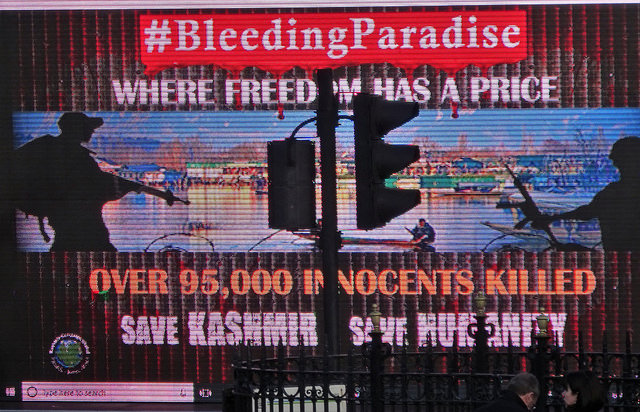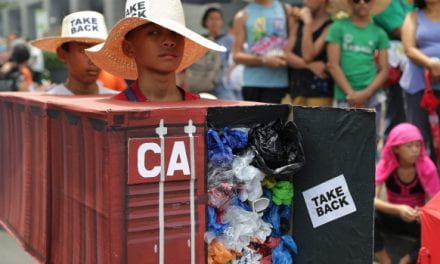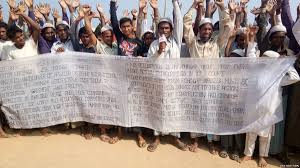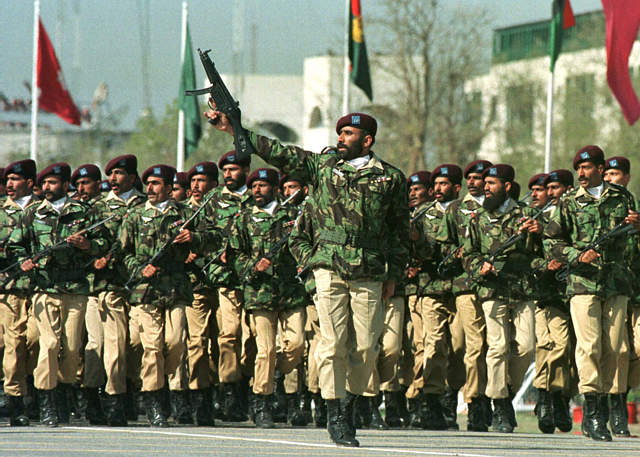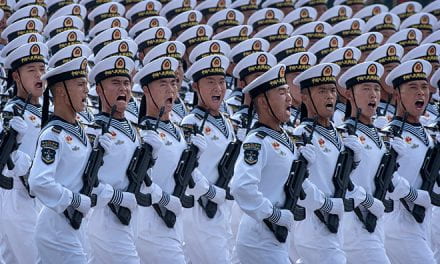By: Amna Rana*
Sometimes, when one has been exposed to the same thing over and over again, it becomes difficult to avoid becoming numb and glance over “the thing” or ignore it. On February 11, 2018, as I read the newspaper, I glanced over the headline, “Militants storm Indian Army Base, Killing Soldiers and a Civilian,” and I moved on. [1] The truth is that the same story has recurred so many times over the past few decades that those of us who follow this region can predict exactly what would happen in the aftermath of this incident. India and Pakistan would engage in their traditional blame game, the perpetrators of the attacks would be framed as terrorists and, tensions between India and Pakistan would escalate, while the conflict of Kashmir (the disputed region between India and Pakistan where the attack occurred) would remain unresolved. These attacks and their aftermath have become so routine at this point that it is hard to even feel an ounce of emotions while reading such headlines. Yet, it is crucial to at least empathize with those whose lives have been impacted by the conflict in order to press for a solution. Furthermore, as such incidents in Kashmir continue to recur and elevate tensions between India and Pakistan, little to no effort is being made to remedy the main causes of the problem. Instead, the situation has turned into a vicious cycle of increased human rights abuses and militancy in the region, disrupting the lives of those who live there. Meanwhile, the voices of Kashmiris are suppressed, either under the label of terrorism or the much louder voices of the state actors, India and Pakistan. Under such dire circumstances, the greater the need to find a solution for this issue, the more impossible and unlikely a solution seems. However, the world must not ignore the Kashmiris just to maintain “peace” between India and Pakistan. Instead, we must reevaluate the conflict from their perspective, and include the Kashmiris in diplomatic peace negotiations of India and Pakistan in order to bring real, substantial, and long-lasting peace to the region of Kashmir.
What’s the Issue?
According to the New York Times, in the most recent incident, a few heavily armed militants stormed the Indian army base of the 36th Brigade in the Jammu region of the Indian-controlled area of Kashmir.[2] The attack began around 5 a.m on the morning of February 10, 2018 as militants entered the family quarters of army officers. In the end, the militants killed five soldiers and one civilian and injured nine other people. The Indian Army soon dispatched special forces, who cornered and killed four militants after a 24 hours-long firefight.[3]
While the death toll in this particular incident stands at 10, the number of deaths in Kashmir over the past few years is truly horrifying. According to Hindustan Times, there have been 69,820 “militancy-related incidents” in Kashmir from 1990 to 2017 (2,586 incidents per year).[4] These incidents have claimed 41,000 lives (4 per day), including14,000 civilians, 5,000 security personnel, and 22,000 militants. Over these 27 years, there have been periods of improving or worsening conditions. For example, from 2004 to 2014, there was a decline in militancy and a simultaneous improvement in relations between India and Pakistan. However, since 2014, conditions have deteriorated once again. While there were 222 militancy-related incidents in 2014, this number increased to 322 in 2016.[5]
Tracing the Roots
A few factors have contributed to the worsening conditions in Kashmir. First of all, the power shift in India from the government of Manmohan Singh to the government of Narendra Modi and his ruling party, the BJP, has been seen as one factor. Perhaps it is not a coincidence that the years of decline in militancy are correlated with Singh’s two terms in office from 2004 to 2014. Singh’s approach to the Kashmir conflict was more inclusive than Modi’s hardline approach to the conflict. Modi’s government was elected on a nationalist agenda, which is well reflected in his policies towards Kashmir. The new government alienated Kashmiris by not engaging in any dialogue with the separatist groups.[6] Furthermore, the government planned to resettle Hindus to the predominantly Muslim region, even though many Hindus do not wish to live in the region.[7] This government policy was also not supported by many as it was perceived as an attempt to undermine the Muslim majority of the region (even though the majority has little to no control in the region). Therefore, in many ways, the policies of Modi’s government have been “marked by more crackdowns and a deliberate disregard for the authority of the state government” thereby excluding Kashmiri Muslims in many ways. Thus, the clear rise in militancy since Modi’s election (42% rise in militancy related deaths and 72% rise in security forces’ deaths in Kashmir) can be seen as a consequence of Modi’s hardline approach towards Kashmir.
Additionally, another factor contributing to the rise in militancy is the murder of Burhan Wani in 2016 and the terrible conditions in Kashmir that followed the murder. Wani was a militant leader fighting in the name of Kashmiri independence and thus an icon for many young Kashmiris who aspire to live in freedom. His death sparked large protests and confrontations between Kashmiris and the Indian armed forces. In an interview with Hindustan Times, strategic affairs expert Uday Bhaskar stated that, “The elimination of Burhan Wani has increased the sense of alienation among a section of Kashmiri youth. This has created a fertile ecosystem for the anti-India sentiment and ideology to gain strength. Concurrently the inability of the ruling alliance in Srinagar to provide a credible and empathetic political intervention is palpable.”[8] Bhaskar directly linked the rise in militancy to the environment that is producing it.
Speaking of the environment or “fertile ecosystem” which allows militancy to grow, the Indian security forces are also known for committing human rights violation against Kashmiris, which further alienates the group. For example, in the aftermath of the murder of Wani, the security forces treated protestors extremely brutally. They used “non-lethal” pellets (which blinded many people) and tear gas to break up demonstrations, while killing at least 90 people.[9] Furthermore, the government placed the region of Kashmir under a long period of curfew during which citizens were left without access to internet or mobile data services, as the region was cut off from the world. Many people were forced to stay at home, as the curfew affected businesses and shopkeepers, who ran out of supplies. Schools, businesses, public transportation, and gas stations were closed for a long time. As a result, people protested even more and calls for independence grew louder.[10]
This is just one example of how the quality of life of Kashmiris has declined due to an increase in both militancy and human rights violations by the government’s crackdowns, both of which contribute to each other’s growth. A rise in militant activity is often treated with additional crackdowns by the government. On the other hand, in reaction to crackdowns and human rights violations committed by the government, militants increase their efforts as well. Meanwhile, Kashmiri citizens are trapped within this vicious cycle and stuck with a deteriorating standard of living.
What About the Kashmiris?
Yet, amidst all this turbulence in the region, the people of Kashmir remain largely unheard. Firstly, because Kashmir remains a disputed territory and a non-state actor, in the aftermath of a violent incident in Kashmir, India and Pakistan dominate the conversation by engaging in their usual blame game, leaving Kashmiris, who are most impacted by the violence, out of the dialogue. While India typically blames Pakistan for encouraging terrorism in Indian-administered Kashmir, Pakistan replies by blaming India for its brutal treatment of Kashmiri Muslims. Amidst the noise of these arch-rivals, the voices of Kashmiris, demanding independence and peace, are suppressed.
In addition, the Kashmiri narrative is also silenced under the label of terrorism. In the aftermath of militant incidents, the Indian government often frames these incidents and those who support them as acts of terrorism. In reality, the militant activities performed by Kashmiris are by definition part of an insurgency. As Treston Wheat explains,
The most fundamental difference between insurgency and terrorism can be found in the definitions of the words. The definition of terrorism is politically motivated violence or the threat of violence against non-combatants by sub-state actors; the definition of insurgency, on the other hand, is a ‘struggle between a nonruling group and the ruling authorities in which the nonruling group uses political resources and violence’ and is a ‘protracted political-military activity’ that uses irregular military forces.[11]
In the case of Kashmir, the militants have mostly perpetrated violence against combatants and not non-combatants, as they have targeted the Indian Army. This, according to Wheat, is one of the defining differences between insurgents and terrorists, that the former attack combatants and the latter attack non-combatants.[12] Additionally, such militant actions are a part of the Kashmiri struggle for independence against the ruling group, namely the Indian government. A Kashmiri journalist explained during the 2016 curfew that “Kashmir’s new-age rebellion enjoys immense popularity for multiple reasons,” and he further wrote that “children are asking questions. What is India? … What is a referendum? Why has India occupied our land? When will we get freedom?”[13] This reveals that there is significant support for independence in Kashmir, and because motivation of the Kashmiri militants is independence rather than seeking revenge or attention, their actions are more appropriately defined as an insurgency instead of terrorism. Yet, India is able to wrongfully frame these incidents as acts of terrorism and thus change the conversation’s direction in a way in which the Kashmiris, now known as terrorists, are not allowed to give an explanation for their actions. Even when they try, they are shut up by Indian guns, which now have a constant presence in a region that is heavily militarized.
Solutions?
While this conflict is an extremely important international issue, its solution seems impossible, simply because the independence of Kashmir is not in the interest of either India or Pakistan. Furthermore, international intervention in this issue does not seem like a viable option, perhaps because states would not be willing to intervene and take sides in a rivalry that has nuclear capability on both sides. Even if an international actor were to intervene for peace, such intervention would most likely be fruitless. Considering that India and Pakistan have now owned their portions of Kashmir for almost 70 years and particularly because of the intense emotions involved in this rivalry, a genuine compromise which favors the Kashmiris is in fact nearly impossible now.
Still, there is a desperate need for a solution. Militancy is a real problem which has taken many lives, destabilized the region of Kashmir, and led to heightened conflict between India and Pakistan, bringing the two countries to the verge of nuclear conflict. In order to solve the problem itself, it will be extremely important to eliminate the causes of the problem, many of which were discussed earlier. One of the only ways to solve this conflict is through peace talks between India and Pakistan, which have proved beneficial in the past. The international community should pressure the two countries to discuss peace without actually getting involved itself (which might further complicate matters and result in a proxy war amongst different alliances). In this case, because the topic of Kashmir is so sensitive, and close to the hearts and egos of both Indians and Pakistanis, the actual solution must come from within the regions through dialogue between Indians, Pakistanis and Kashmiris. The international community is fairly helpless in this case, and perhaps all it can do is encourage and press for the dialogue to occur. However, a solution for this conflict is imperative as instability in this region has very real chances of resulting in nuclear warfare. The entire world, and India and Pakistan in particular, must stop ignoring the Kashmiris in order to eradicate violence from the region and achieve a long-lasting peaceful solution.
[1] Sameer Yasir, “Militants Storm Indian Army Base, Killing Soldiers and a Civilian,” New York Times, February 11, 2018, accessed March 5, 2018, https://www.nytimes.com/2018/02/11/world/asia/jammu-base-attack.html?rref=collection%2Fsectioncollection%2Fworld&action=click&contentCollection=world®ion=rank&module=package&version=highlights&contentPlacement=9&pgtype=sectionfront.
[2] Ibid.
[3] Ibid.
[4] Jayanth Jacob and Aurangzeb Naqshbandi, “41,000 deaths in 27 years: The anatomy of Kashmir militancy in numbers,” Hindustan Times, September 25, 2017, accessed March 5, 2018, https://www.hindustantimes.com/india-news/the-anatomy-of-kashmir-militancy-in-numbers/story-UncrzPTGhN22Uf1HHe64JJ.html.
[5] Ibid.
[6] Jhinuk Chowdhury, “Narendra Modi’s Grand Plan for Kashmir,” The Diplomat, March 12, 2015, accessed March 5, 2018, https://thediplomat.com/2015/03/narendra-modis-grand-plan-for-kashmir/.
[7] Suryatapa Bhattacharya, “Protests Break Out in Indian State Over Plan to Resettle Hindus,” The Wall Street Journal, April 10, 2015, accessed March 5, 2018, https://www.wsj.com/articles/protests-break-out-in-indian-state-over-plan-to-resettle-hindus-1428684009.
[8] Jacob and Naqshbandi, “41,000 deaths in 27 years.”
[9] Mirza Waheed, “India’s crackdown in Kashmir: is this the world’s first mass blinding?” The Guardian, November 8, 2018, accessed March 5, 2018, https://www.theguardian.com/world/2016/nov/08/india-crackdown-in-kashmir-is-this-worlds-first-mass-blinding
[10] Gowhar Geelani, “Living in the shadow of curfew in Kashmir,” BBC, September 5, 2016, accessed March 5, 2018, http://www.bbc.com/news/world-asia-india-37211760
[11] Treston Wheat, “The Difference Between Terrorists and Insurgents,” World Report News (website), December 26, 2011, accessed March 5, 2018, http://www.worldreportnews.com/us-foreign-policy-archived/the-difference-between-terrorists-and-insurgents.
[12] Ibid.
[13] Geelani, “Living in the shadow of curfew in Kashmir.”

